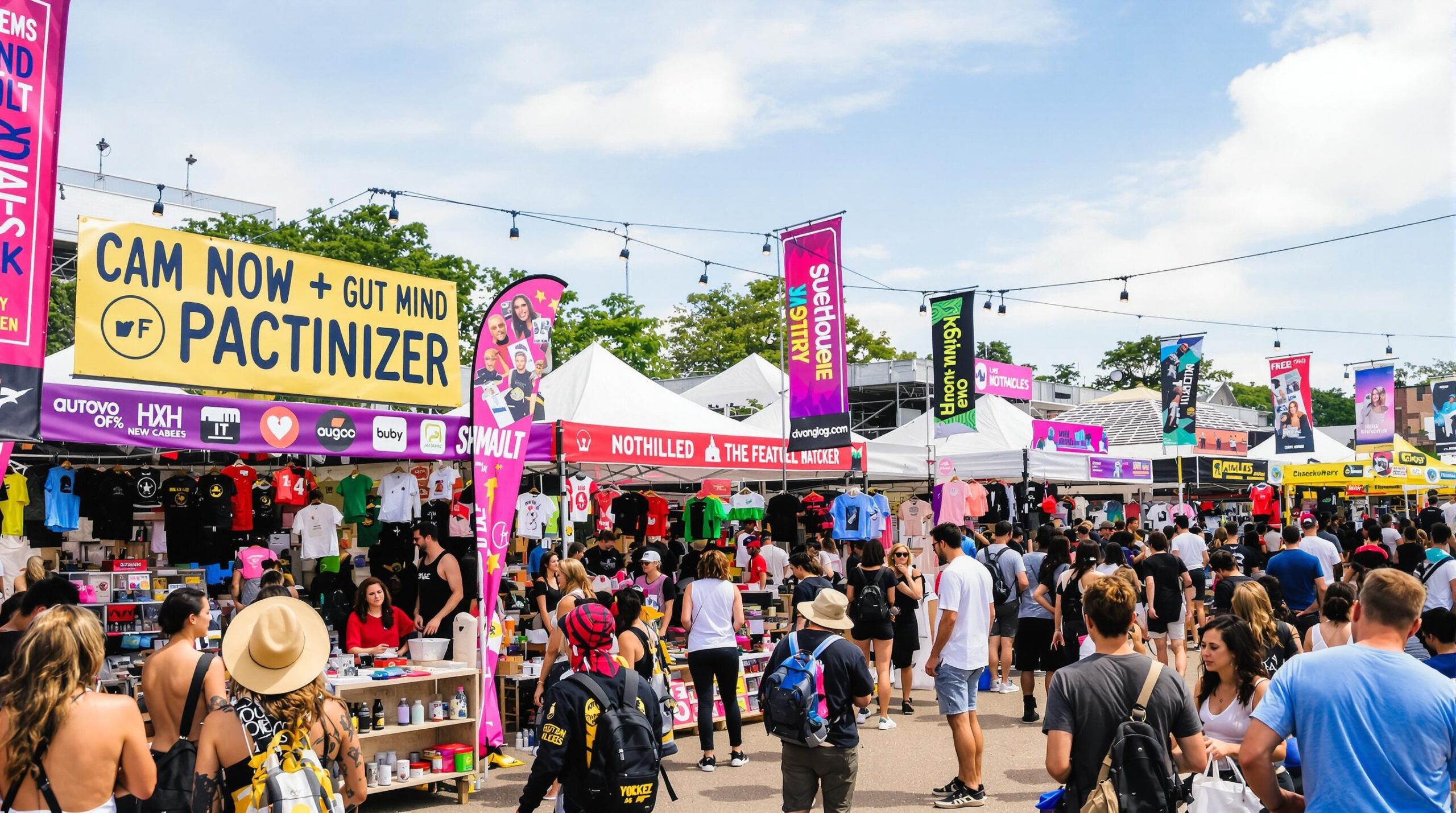The advent of music festivals as cultural phenomena has revolutionized merchandising strategies. These events are now effectively leveraging the power of streaming platforms, creating a seamless bridge between live performance and consumer retail. By integrating stream-to-shop technology, music festivals have transformed their merchandising approach, making it more dynamic and personalized. As a result, artists and brands are capitalizing on this trend, enhancing fan engagement and boosting sales.
The Rise of Music Festivals and Technology
Over the last two decades, music festivals have become a staple of the entertainment industry. The rise of technology and social media has fueled their growth. These events, from Coachella in the United States to Glastonbury in the UK, attract millions of attendees. This popularity presents a lucrative opportunity for merchandising strategies that evolve with technology. The convergence of technology and music festivals is particularly evident in the use of streaming platforms.
Streaming Platforms Shaping New Merchandising Tactics
Streaming platforms like Spotify, Apple Music, and YouTube have revolutionized how audiences consume music. These platforms have shifted consumer expectations for immediate and convenient access to music and merchandise. Music festivals are harnessing this trend with stream-to-shop services. Fans can seamlessly purchase official merchandise directly through streaming platforms. This strategy removes barriers and enhances the consumer experience.
The Role of Data in Tailoring Festival Merchandising
As consumers engage with streaming platforms, they leave behind valuable data. Music festivals utilize this data to craft tailored merchandising strategies. By analyzing streaming behavior, festivals understand what their audience likes and how they interact with music. This knowledge allows organizers to stock merchandise that resonates with festivalgoers. As a result, artists and brands can offer personalized products that appeal directly to consumers.
Interactive Merchandise Experiences at Music Festivals
Music festivals are not just about music. They are immersive experiences that captivate attendees across multiple senses. Merchandising at these festivals is evolving beyond mere physical product sales. Interactive merchandise experiences are becoming a central element of this evolving strategy. Festivals leverage augmented reality (AR) and virtual reality (VR) to create unique shopping experiences. These technologies enable consumers to interact with merchandise in novel ways.
Augmented Reality Enhancing Shopping Experiences
AR technology brings merchandise to life in ways that were previously unimaginable. AR can overlay digital content at music festivals onto physical objects, enhancing the shopping experience. For example, attendees can use their smartphones to see how clothing fits them without trying it on. This interactive approach increases consumer engagement and encourages spontaneous purchases.
Virtual Reality Creating Immersive Brand Worlds
VR presents another exciting avenue for merchandising innovation. Some festivals offer virtual brand environments that immerse attendees in a creative narrative. In these spaces, consumers can explore brand stories, interact with virtual merchandise, and purchase. VR experiences capture the imagination and foster a deeper connection between the consumer and the brand.
Artists and Brands: A Symbiotic Relationship
The relationship between artists and brands has become more interdependent in recent years. Merchandising strategies at music festivals are a testament to this collaboration. Artists unlock new revenue streams by partnering with brands. Meanwhile, brands gain exposure and credibility among a highly engaged audience. These partnerships are essential to stream-to-shop success. The synergy between artists and brands will only deepen as music festivals grow.
Exclusive Collaborations Driving Merchandise Appeal
Exclusive collaborations between artists and brands create a sense of urgency among consumers. Limited-edition merchandise builds hype, encouraging fans to make purchases. These exclusive items often reflect the musician’s artistic influence and the brand’s ethos. Such collaborations are mutually beneficial, enhancing the artist’s brand while driving product demand.
Brand Activations and Festival Experiences
At music festivals, brands have the opportunity to create memorable experiences for attendees. These brand activations can range from curated lounges to engaging workshops. Such interactive environments allow brands to showcase products authentically. By integrating with the festival atmosphere, they strengthen consumer associations with their products, fostering loyalty and increasing the potential for future sales.
Challenges in the Stream-to-Shop Model
Despite the successes, the stream-to-shop model faces several challenges. While data and technology optimize consumer experiences, they also present privacy concerns. Festivalgoers are increasingly aware of how their data is used and protected. Therefore, music festivals and streaming platforms must prioritize data security to maintain consumer trust.
Balancing Privacy and Personalization
In the stream-to-shop model, it is crucial to find a balance between personalization and privacy. Consumers appreciate personalization but demand transparency about data usage. Music festivals must provide a clear communication regarding data collection and use. Building consumer trust is key to the long-term success of these merchandising strategies.
Sustainability Concerns in Festival Merchandising
Sustainability is another challenge within the stream-to-shop framework. With increasing environmental awareness, consumers expect responsible practices from brands and events. Merchandise production and distribution must adhere to sustainable practices to meet consumer expectations. Many festivals and brands are exploring eco-friendly materials and production processes to reduce environmental impact.
The Future of Music Festival Merchandising
The integration of stream-to-shop technology is just the beginning. As music festivals embrace technological advancements, the merchandising landscape will further evolve. Artificial intelligence, blockchain, and immersive technologies could shape future merchandising strategies. Artists and brands must stay agile and innovative to remain competitive.
The potential of Artificial Intelligence in Merchandising
AI could revolutionize how festivals tailor their merchandising, providing real-time insights into consumer desires. AI algorithms can analyze vast data sets to predict trends and preferences accurately, empowering festivals and brands to make informed decisions about product offerings.
Blockchain for Transparent Transactions
Blockchain technology presents opportunities for secure, transparent transactions in the merchandise sector. By utilizing blockchain, festivals ensure authenticity and build consumer confidence in their offerings. Blockchain can also support fair compensation for artists by tracking merchandise sales accurately.
Conclusion
Music festivals are at the forefront of changing merchandising strategies. Embracing stream-to-shop technology enhances the consumer experience and fosters closer artist-brand interactions. The rise of interactive experiences and strategic partnerships further enrich these events. However, privacy concerns and sustainability must be addressed to ensure long-term success. The stream-to-shop revolution is not without challenges, but its potential is immense. The evolving landscape promises exciting developments in festival merchandising, benefiting artists, brands, and consumers alike.


